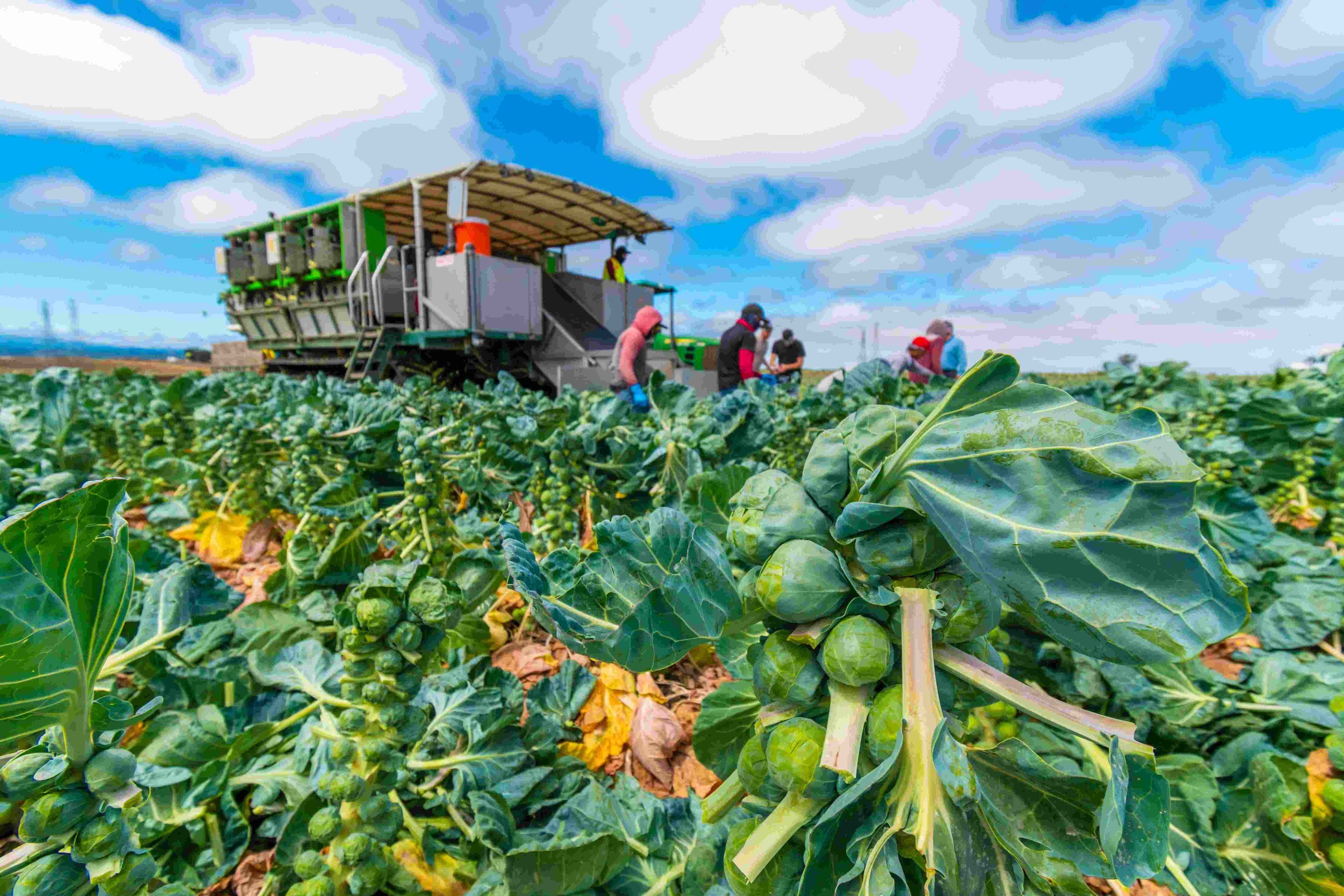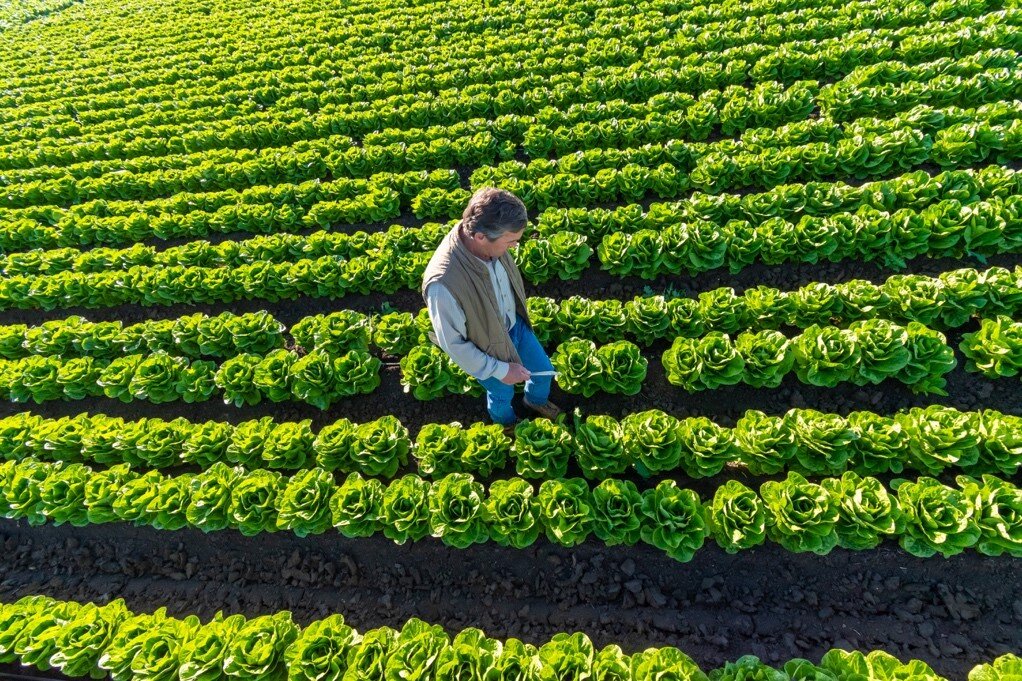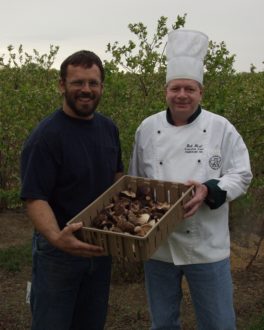farm-to-table is a culinary philosophy that emphasizes the use of fresh, locally sourced ingredients. By partnering with local farmers and producers, chefs can create dishes that are not only delicious but also sustainable and supportive of the local community. In this article, we will explore the farm-to-table concept, discuss its benefits and challenges, and provide tips for implementing a farm-to-table program in your restaurant or business.
Case Studies of Successful Farm-to-Table Models
Many restaurants have successfully implemented farm-to-table programs. Here are a few examples:
- Alice Waters’ Chez Panisse in Berkeley, California, is one of the pioneers of the farm-to-table movement. The restaurant has been working with local farmers for over 40 years to source fresh, seasonal ingredients for its menu.
- The French Laundry in Yountville, California, is another renowned restaurant that has embraced the farm-to-table concept. The restaurant’s chef, Thomas Keller, works closely with local farmers to create a menu that showcases the best of California’s bounty.
- Blue Hill at Stone Barns in Pocantico Hills, New York, is a farm-to-table restaurant that is located on a working farm. The restaurant’s menu changes daily based on what is fresh from the farm.
| Restaurant | Location | Chef |
|---|---|---|
| Chez Panisse | Berkeley, California | Alice Waters |
| The French Laundry | Yountville, California | Thomas Keller |
| Blue Hill at Stone Barns | Pocantico Hills, New York | Dan Barber |
These are just a few examples of the many successful farm-to-table restaurants that are operating today. By sourcing ingredients from local farmers, these restaurants are able to offer their customers fresh, seasonal dishes that are also sustainable and supportive of the local community.

Farm-to-Table Trends in Fine Dining
Fine Dining Restaurants Embrace Farm-to-Table
Fine dining restaurants are increasingly embracing the farm-to-table concept. This approach allows chefs to create dishes that are not only delicious but also sustainable and supportive of the local community. By sourcing ingredients from local farmers, chefs can ensure that their dishes are made with the freshest, most flavorful ingredients available.One of the pioneers of the farm-to-table movement is Alice Waters, the chef and owner of Chez Panisse in Berkeley, California. Waters has been working with local farmers for over 40 years to source ingredients for her restaurant’s menu. Her commitment to farm-to-table cooking has helped to inspire a new generation of chefs to adopt this approach.Another renowned chef who has embraced the farm-to-table concept is Thomas Keller, the chef and owner of The French Laundry in Yountville, California. Keller works closely with local farmers to create a menu that showcases the best of California’s bounty. His dishes are known for their freshness, flavor, and creativity.
Benefits of Farm-to-Table for Fine Dining Restaurants
There are many benefits to adopting a farm-to-table approach for fine dining restaurants. First, it allows chefs to offer their customers the freshest, most flavorful ingredients available. Second, it helps to support local farmers and the local economy. Third, it reduces the environmental impact of food production.
| Benefit | Explanation |
|---|---|
| Fresh, flavorful ingredients | Farm-to-table restaurants source their ingredients from local farmers, which means that the ingredients are picked at the peak of freshness and flavor. |
| Supports local farmers | By sourcing ingredients from local farmers, farm-to-table restaurants help to support the local economy and keep farmers in business. |
| Reduces environmental impact | Farm-to-table restaurants reduce the environmental impact of food production by reducing food miles and packaging waste. |
If you are looking for a fine dining experience that is both delicious and sustainable, look for a restaurant that embraces the farm-to-table concept. You will be able to enjoy fresh, flavorful dishes that are made with the finest ingredients available, while also supporting your local community and the environment.

Baking
Baking is a great way to use fresh, local ingredients. When you bake with local ingredients, you know exactly what’s in your food and where it came from. Plus, local ingredients are often more flavorful and nutritious than ingredients that have been shipped long distances.
There are many different ways to use local ingredients in baking. You can use them to make bread, cakes, cookies, pies, and more. Here are a few ideas:
| Baked Good | Local Ingredients |
|---|---|
| Bread | Local flour, milk, and eggs |
| Cake | Local fruit, nuts, and honey |
| Cookies | Local butter, sugar, and flour |
| Pies | Local fruit and sugar |
When you bake with local ingredients, you’re not only supporting your local farmers, you’re also getting the freshest, most flavorful ingredients possible. So next time you’re baking, be sure to use local ingredients!
Here are some of the benefits of using local ingredients in baking:
- You know exactly what’s in your food and where it came from.
- Local ingredients are often more flavorful and nutritious than ingredients that have been shipped long distances.
- Using local ingredients supports your local farmers.
If you’re looking for ways to use local ingredients in your baking, there are many resources available online. You can also find local farmers markets and CSAs (community supported agriculture) in your area.
So what are you waiting for? Start baking with local ingredients today!
Here are some links to related posts that you might find interesting:
- Case Studies of Successful Farm-to-Table Models
- Farm-to-Table Trends in Fine Dining
- Building Relationships with Local Farmers

Farm-to-Table Baking and Desserts
Local Ingredients Make the Best Desserts
When you bake with local ingredients, you’re not only supporting your local farmers, you’re also getting the freshest, most flavorful ingredients possible. And when it comes to desserts, fresh, flavorful ingredients are essential.
Here are some of the benefits of using local ingredients in your baking:
- You know exactly what’s in your food and where it came from.
- Local ingredients are often more flavorful and nutritious than ingredients that have been shipped long distances.
- Using local ingredients supports your local farmers.
Get Creative with Local Ingredients
There are endless possibilities when it comes to using local ingredients in your baking. You can use them to make classic desserts like apple pie and chocolate cake, or you can get creative and experiment with new flavors and combinations.
Here are a few ideas for using local ingredients in your baking:
- Use local fruit to make pies, tarts, and cobblers.
- Use local nuts to make cookies, cakes, and breads.
- Use local honey to sweeten your desserts.
| Dessert | Local Ingredients |
|---|---|
| Apple pie | Local apples, sugar, flour, butter |
| Chocolate cake | Local chocolate, flour, sugar, butter, eggs |
| Honey cake | Local honey, flour, sugar, butter, eggs |
No matter what you choose to bake, using local ingredients is a great way to support your local farmers and enjoy the freshest, most flavorful desserts possible.
Here are some links to related posts that you might find interesting:
- Case Studies of Successful Farm-to-Table Models
- Farm-to-Table Trends in Fine Dining
- Building Relationships with Local Farmers

Building Relationships with Local Farmers
The Importance of Local Partnerships
Building relationships with local farmers is essential for any farm-to-table restaurant or business. By getting to know the farmers who grow your food, you can learn about their farming practices, ensure the quality of your ingredients, and support your local community.
- Case Studies of Successful Farm-to-Table Models
- Farm-to-Table Trends in Fine Dining
- Farm-to-Table Baking and Desserts
| Benefit | Explanation |
|---|---|
| Learn about farming practices | By getting to know your local farmers, you can learn about their farming practices and how they grow your food. This can help you make informed decisions about the food you eat. |
| Ensure the quality of your ingredients | By working with local farmers, you can ensure the quality of your ingredients. You can visit their farms and see firsthand how their food is grown. |
| Support your local community | By buying food from local farmers, you are supporting your local community. You are helping to keep farmers in business and preserving the local food system. |
How to Build Relationships with Local Farmers
There are many ways to build relationships with local farmers. Here are a few tips:
- Visit local farmers markets.
- Join a CSA (community supported agriculture) program.
- Volunteer on a local farm.
- Attend farm events.
- Get to know your local farmers through social media.
Once you have established relationships with local farmers, you can start to build a mutually beneficial partnership. You can work together to develop new products, promote each other’s businesses, and support your local community.
- The Role of Seafood in Farm-to-Table
- Menu Planning in Farm-to-Table Cuisine
- The Role of Organic Farming in Farm-to-Table

The Role of Chefs in the Farm-to-Table Movement
Chefs play a vital role in the farm-to-table movement. They are the ones who create the dishes that showcase the fresh, seasonal ingredients that are sourced from local farmers. By working with local farmers, chefs can ensure that their dishes are made with the highest quality ingredients available. They can also learn about the farming practices that are used to grow the food, which can help them to make informed decisions about the food they serve.
Chefs are also responsible for educating their customers about the farm-to-table movement. They can do this by talking to their customers about the benefits of eating locally sourced food, and by featuring farm-to-table dishes on their menus. By doing this, chefs can help to raise awareness of the farm-to-table movement and encourage their customers to eat more sustainably.
| Chef | Restaurant | Location |
|---|---|---|
| Alice Waters | Chez Panisse | Berkeley, California |
| Thomas Keller | The French Laundry | Yountville, California |
| Dan Barber | Blue Hill at Stone Barns | Pocantico Hills, New York |
Here are some examples of how chefs are using their skills to promote the farm-to-table movement:
- Alice Waters, the chef and owner of Chez Panisse in Berkeley, California, is a pioneer of the farm-to-table movement. She has been working with local farmers for over 40 years to source ingredients for her restaurant’s menu.
- Thomas Keller, the chef and owner of The French Laundry in Yountville, California, is another renowned chef who has embraced the farm-to-table concept. He works closely with local farmers to create a menu that showcases the best of California’s bounty.
- Dan Barber, the chef and owner of Blue Hill at Stone Barns in Pocantico Hills, New York, is a chef who is committed to sustainability. He grows many of the ingredients for his restaurant’s menu on his own farm, and he works with local farmers to source the rest of his ingredients.
These are just a few examples of the many chefs who are using their skills to promote the farm-to-table movement. By working with local farmers and educating their customers about the benefits of eating locally sourced food, chefs are helping to create a more sustainable food system.
Here are some links to related posts that you might find interesting:
- Case Studies of Successful Farm-to-Table Models
- Farm-to-Table Trends in Fine Dining
- Farm-to-Table Baking and Desserts
- Building Relationships with Local Farmers

The Role of Organic Farming in Farm-to-Table
Benefits of Organic Farming for Farm-to-Table Restaurants
Organic farming is a method of agriculture that emphasizes the use of natural fertilizers and pest control methods. Organic farmers do not use synthetic pesticides or herbicides, and they rely on crop rotation and other natural methods to maintain soil health and control pests.There are many benefits to using organic ingredients in farm-to-table restaurants. First, organic ingredients are often more flavorful and nutritious than conventionally grown ingredients. Second, organic farming is better for the environment, as it reduces pollution and conserves water and soil. Third, organic farming supports local farmers and the local economy.
- Case Studies of Successful Farm-to-Table Models
- Farm-to-Table Trends in Fine Dining
- Farm-to-Table Baking and Desserts
| Benefit | Explanation |
|---|---|
| More flavorful and nutritious ingredients | Organic ingredients are often more flavorful and nutritious than conventionally grown ingredients because they are grown in soil that is rich in nutrients. |
| Better for the environment | Organic farming is better for the environment because it reduces pollution and conserves water and soil. |
| Supports local farmers and the local economy | Organic farming supports local farmers and the local economy because it creates demand for organic products and helps to keep farmers in business. |
Challenges of Organic Farming for Farm-to-Table Restaurants
While there are many benefits to using organic ingredients in farm-to-table restaurants, there are also some challenges. One challenge is that organic ingredients can be more expensive than conventionally grown ingredients. Another challenge is that organic ingredients can be more difficult to find, especially during the off-season.
- Building Relationships with Local Farmers
- The Role of Seafood in Farm-to-Table
- Menu Planning in Farm-to-Table Cuisine
Despite the challenges, many farm-to-table restaurants are committed to using organic ingredients. They believe that the benefits of organic farming outweigh the challenges, and they are willing to pay a premium for organic ingredients in order to provide their customers with the highest quality food possible.

The Ethics of Meat Sourcing in Farm-to-Table
In the farm-to-table movement, there is a growing emphasis on the ethical sourcing of meat. This means that restaurants and consumers are increasingly concerned about the welfare of the animals that they eat, and they are looking for ways to support farmers who are raising animals in a humane and sustainable way.
There are a number of different factors to consider when evaluating the ethics of meat sourcing. These factors include the animals’ living conditions, their diet, and the methods used to slaughter them.
- Read more about Case Studies of Successful Farm-to-Table Models
- Read more about Farm-to-Table Trends in Fine Dining
| Factor | Consideration |
|---|---|
| Living conditions | Animals should be raised in a clean, safe, and comfortable environment. They should have access to fresh air, water, and food, and they should be able to move around freely. |
| Diet | Animals should be fed a healthy diet that is appropriate for their species. They should not be given antibiotics or hormones, and they should not be fed animal by-products. |
| Slaughter methods | Animals should be slaughtered in a humane manner. This means that they should be killed quickly and painlessly. |
By considering these factors, consumers can make informed decisions about the meat that they eat. They can choose to support farmers who are raising animals in a humane and sustainable way, and they can help to create a more ethical food system.
Here are some tips for sourcing meat ethically:
- Buy meat from local farmers who you know and trust.
- Look for meat that is labeled “grass-fed” or “pasture-raised.” This means that the animals were raised on a diet of grass and other natural foods, and they were not given antibiotics or hormones.
- Choose meat that is slaughtered in a humane manner.
By following these tips, you can help to create a more ethical and sustainable food system.
Here are some links to related posts that you might find interesting:
- Building Relationships with Local Farmers
- The Role of Seafood in Farm-to-Table
- Menu Planning in Farm-to-Table Cuisine

Sourcing Locally: Challenges and Benefits
Challenges of Sourcing Locally
Sourcing ingredients locally can be challenging for a number of reasons. One challenge is that it can be difficult to find local farmers who grow the specific ingredients that you need. Another challenge is that local ingredients can be more expensive than ingredients that are shipped in from other regions. Finally, sourcing locally can be more time-consuming than sourcing ingredients from a large distributor.
- Difficult to find local farmers
- Local ingredients can be more expensive
- Sourcing locally can be more time-consuming
Benefits of Sourcing Locally
Despite the challenges, there are also a number of benefits to sourcing ingredients locally. One benefit is that local ingredients are often fresher and more flavorful than ingredients that are shipped in from other regions. Another benefit is that sourcing locally supports the local economy. Finally, sourcing locally can help to reduce the environmental impact of food production.
- Local ingredients are often fresher and more flavorful
- Sourcing locally supports the local economy
- Sourcing locally can help to reduce the environmental impact of food production
| Challenge | Benefit |
|---|---|
| Difficult to find local farmers | Local ingredients are often fresher and more flavorful |
| Local ingredients can be more expensive | Sourcing locally supports the local economy |
| Sourcing locally can be more time-consuming | Sourcing locally can help to reduce the environmental impact of food production |
Overall, there are both challenges and benefits to sourcing ingredients locally. It is important to weigh the pros and cons carefully before making a decision about whether or not to source locally.
Here are some tips for sourcing locally:
- Building Relationships with Local Farmers
- Visit local farmers markets
- Join a CSA (community supported agriculture) program

Farm-to-Table Marketing Strategies
Promote Your Farm-to-Table Program
Once you have a farm-to-table program in place, you need to let your customers know about it. There are a number of ways to market your farm-to-table program, including:
- Creating a marketing campaign that highlights the benefits of your farm-to-table program.
- Developing a social media strategy that promotes your farm-to-table program.
- Hosting events that showcase your farm-to-table program.
| Marketing Strategy | Description |
|---|---|
| Marketing campaign | A marketing campaign is a coordinated effort to promote your farm-to-table program. This could include print advertising, online advertising, and social media marketing. |
| Social media strategy | A social media strategy is a plan for using social media to promote your farm-to-table program. This could include creating social media accounts, posting regular updates, and running social media ads. |
| Events | Hosting events is a great way to showcase your farm-to-table program and get people excited about it. This could include farm tours, cooking classes, and wine tastings. |
Partner with Local Farms
Partnering with local farms is a great way to promote your farm-to-table program and support your local community. You can partner with local farms in a number of ways, including:
- Buying ingredients from local farms.
- Hosting farm tours for your customers.
- Offering cooking classes that feature local ingredients.
By partnering with local farms, you can show your customers that you are committed to supporting your local community and providing them with the freshest, most flavorful ingredients possible.
Here are some links to related posts that you might find interesting:
- Case Studies of Successful Farm-to-Table Models
- Farm-to-Table Trends in Fine Dining
- Farm-to-Table Baking and Desserts
Educate Your Customers
Educating your customers about the benefits of farm-to-table dining is a great way to promote your farm-to-table program. You can educate your customers in a number of ways, including:
- Creating a menu that highlights the benefits of farm-to-table dining.
- Offering cooking classes that teach customers how to cook with local ingredients.
- Hosting farm tours that show customers where their food comes from.
By educating your customers about the benefits of farm-to-table dining, you can help them make informed decisions about the food they eat and support your local community.
Here are some links to related posts that you might find interesting:
- Building Relationships with Local Farmers
- The Role of Seafood in Farm-to-Table
- Menu Planning in Farm-to-Table Cuisine
The Impact of Farm-to-Table on Local Economies
Farm-to-table is a growing trend that is having a positive impact on local economies. By sourcing ingredients from local farmers, restaurants and businesses are supporting their communities and helping to keep farmers in business. This is especially important in rural areas, where farming is often a major source of income.
In addition to supporting local farmers, farm-to-table also helps to create jobs in the food industry. Restaurants and businesses that source ingredients locally need to hire staff to prepare and cook the food. This creates jobs for chefs, cooks, and other food service workers.
Farm-to-table is also good for the environment. By reducing the distance that food travels from farm to table, farm-to-table helps to reduce greenhouse gas emissions. This is because less fuel is needed to transport the food.
| Benefit | Explanation |
|---|---|
| Supports local farmers | By sourcing ingredients from local farmers, restaurants and businesses are supporting their communities and helping to keep farmers in business. |
| Creates jobs | Restaurants and businesses that source ingredients locally need to hire staff to prepare and cook the food. This creates jobs for chefs, cooks, and other food service workers. |
| Good for the environment | By reducing the distance that food travels from farm to table, farm-to-table helps to reduce greenhouse gas emissions. |
Overall, farm-to-table is a positive trend that is having a positive impact on local economies, the environment, and the food industry.
- Case Studies of Successful Farm-to-Table Models
- Farm-to-Table Trends in Fine Dining
- Farm-to-Table Baking and Desserts
Understanding the Farm-to-Table Concept
What is Farm-to-Table?
Farm-to-table is a way of eating that focuses on using fresh, local ingredients. This means that the food you eat is grown and raised close to where you live. Farm-to-table restaurants and businesses work with local farmers to get the freshest possible ingredients for their dishes.
There are many benefits to eating farm-to-table. For one, it helps to support local farmers and businesses. It also helps to reduce the environmental impact of food production, because food doesn’t have to travel as far to get to your plate.
If you’re interested in learning more about farm-to-table, there are many resources available online. You can also visit local farmers markets and CSAs (community supported agriculture) to learn more about where your food comes from.
Here are some links to related posts that you might find interesting:
- Case Studies of Successful Farm-to-Table Models
- Farm-to-Table Trends in Fine Dining
- Farm-to-Table Baking and Desserts
How to Eat Farm-to-Table
There are many ways to eat farm-to-table. You can cook with local ingredients at home, or you can eat at restaurants that specialize in farm-to-table cuisine.
If you’re looking for a way to support local farmers and eat healthier, farm-to-table is a great option. Here are a few tips for eating farm-to-table:
- Shop at local farmers markets.
- Join a CSA (community supported agriculture).
- Cook with local ingredients at home.
- Eat at restaurants that specialize in farm-to-table cuisine.
Here are some links to related posts that you might find interesting:
- Building Relationships with Local Farmers
- The Role of Seafood in Farm-to-Table
- Menu Planning in Farm-to-Table Cuisine
| Benefit | Explanation |
|---|---|
| Supports local farmers | By eating farm-to-table, you are supporting local farmers and businesses. |
| Reduces environmental impact | Farm-to-table helps to reduce the environmental impact of food production. |
| Healthier | Farm-to-table food is often fresher and more nutritious than food that has been shipped long distances. |
Final Thought
Farm-to-table is a growing trend that is changing the way we eat. By sourcing ingredients from local farmers, chefs can create dishes that are not only delicious but also sustainable and supportive of the local community. If you are looking to implement a farm-to-table program in your restaurant or business, there are many resources available to help you get started. With a little planning and effort, you can reap the many benefits of farm-to-table dining.




